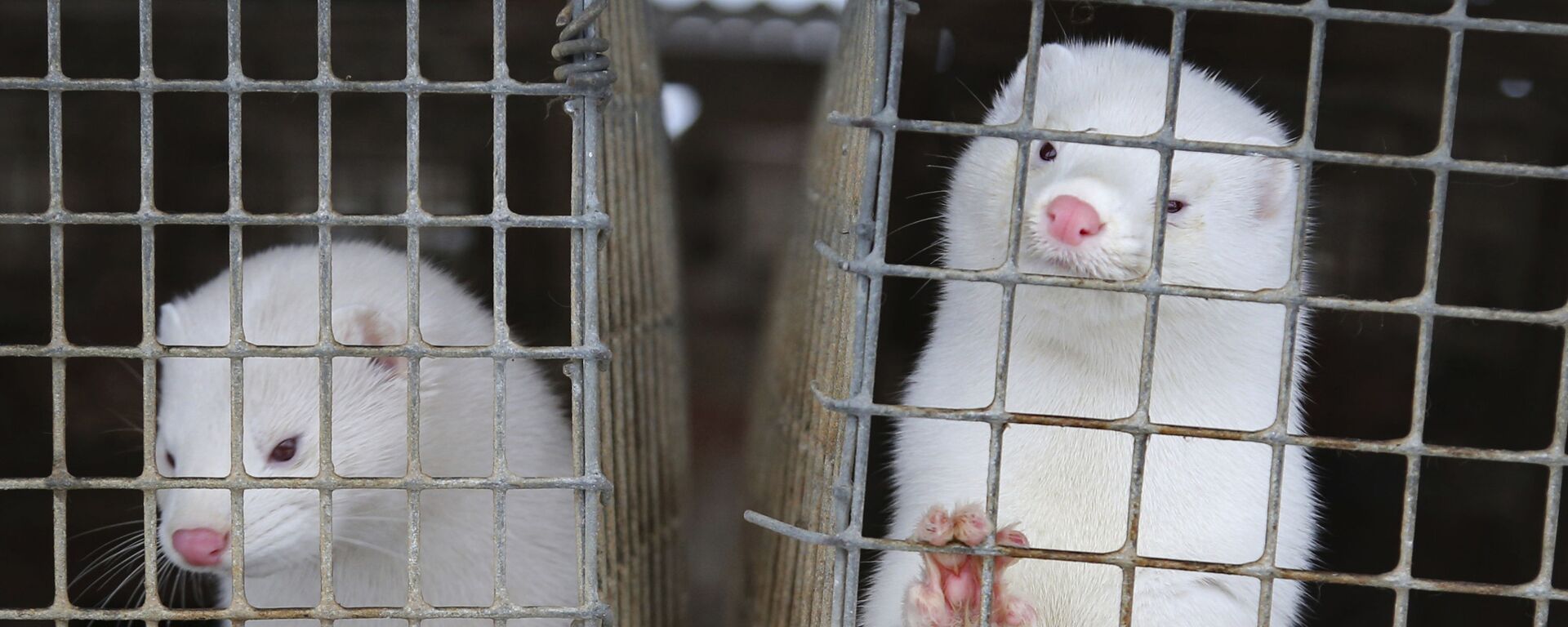https://sputnikglobe.com/20231029/farm-animals-hidden-role-in-shaping-the-health-crises-that-have-hit-human-civilization-1114570896.html
Farm Animals' Hidden Role in Shaping The Health Crises That Have Hit Human Civilization
Farm Animals' Hidden Role in Shaping The Health Crises That Have Hit Human Civilization
Sputnik International
A study of DNA sequences taken from ancient human remains across Eurasia has detected several genes linked to microbes. This has lent credence to the emergence and spread of major human diseases.
2023-10-29T13:10+0000
2023-10-29T13:10+0000
2023-10-29T13:10+0000
beyond politics
science & tech
newsfeed
society
eurasia
university of copenhagen
https://cdn1.img.sputnikglobe.com/img/105077/42/1050774236_0:87:3087:1823_1920x0_80_0_0_c8e78b4aa82bb5f0e579091f58415b9a.jpg
The progress of human civilization owes much to farm animals. However, there is a darker side: these animals are linked to significant health crises in our history. Science has firmly established that when humans began domesticating animals, they unintentionally facilitated the emergence of diseases such as the plague and louse-borne relapsing fever (LBRF).Over time, experts have speculated that the creation of expansive pastoral societies by Eurasian hunter-gatherers roughly 12,000 years ago increased the chances of zoonotic disease transmission. Recent advances in ancient DNA analysis have allowed a team led by geogeneticist Martin Sikora at the University of Copenhagen to explore this theory. They identified numerous microbial genes in 1,313 ancient human samples from across Eurasia.The researchers conducted detailed analysis of pathogen DNA, tracing its lineage back 12,500 years to understand the evolution and spread of significant human diseases. Although their results are still awaiting peer review, an initial report indicates that many microbes probably originated from animals.Interestingly, evidence of zoonotic diseases — those moving between animals and humans — only appeared approximately 6,500 years ago. Notably, pathogens responsible for the plague and LBRF, which reside in small rodents, fleas, and lice, respectively, were absent from human remains until around six millennia ago, aligning with the shift from hunting-gathering to agriculture.After the rise of agriculture, traces of zoonotic microbial DNA in ancient human samples became more consistent. Growing human population densities, combined with declining hygiene standards, led to increased pests and, subsequently, disease spread. Sikora's study indicates a significant shift in disease dynamics during the early stages of human history.At present, more than 60 percent of emerging infectious diseases originate from animals, a striking contrast to ancient times when humans were first introduced to these pathogens. The pioneering societies on the Eurasian steppes that first encountered these animal-borne diseases might have had a unique advantage. Beyond their ample supply of meat and dairy, they had the opportunity to adapt to these new pathogenic threats.Sikora and his team observed a rise in zoonotic microbial DNA in Eurasian human remains around 5,000 years ago. This suggests that migrating Steppe pastoralists introduced agriculture and zoonotic diseases to previously unexposed regions. These pastoralists, having developed some immunity as a result of prolonged exposure to animals, might have inadvertently triggered European epidemics. This pattern might echo the impact of European colonization on indigenous populations in other parts of the world. As Eurasian communities expanded, these diseases shifted from being endemic to epidemic.Researchers determined that the bacterium responsible for the plague was present at low levels from 5,700 to 2,700 years ago and triggered a major epidemic in the Roman Empire around 540 CE. By the medieval era, it became a leading cause of death, as proved by findings in Danish burial sites.Conversely, LBRF peaked about 2,000 years ago when plague activity was low, potentially because of overcrowding and poor sanitation. The team suggests that lifestyle changes millennia ago resulted in a surge in zoonotic diseases, influencing human history and health.
https://sputnikglobe.com/20200708/no-crystal-balls-needed-farm-animals-key-to-forecasting-looming-earthquakes-study-finds-1079833412.html
https://sputnikglobe.com/20210113/coronavirus-vaccine-for-fur-farm-animals-yields-promising-results-in-finland-1081749463.html
eurasia
Sputnik International
feedback@sputniknews.com
+74956456601
MIA „Rossiya Segodnya“
2023
Chimauchem Nwosu
https://cdn1.img.sputnikglobe.com/img/07e7/09/01/1113046371_0:99:1536:1635_100x100_80_0_0_9c5c627283eca931c39fe4852bbb301c.jpg
Chimauchem Nwosu
https://cdn1.img.sputnikglobe.com/img/07e7/09/01/1113046371_0:99:1536:1635_100x100_80_0_0_9c5c627283eca931c39fe4852bbb301c.jpg
News
en_EN
Sputnik International
feedback@sputniknews.com
+74956456601
MIA „Rossiya Segodnya“
Sputnik International
feedback@sputniknews.com
+74956456601
MIA „Rossiya Segodnya“
Chimauchem Nwosu
https://cdn1.img.sputnikglobe.com/img/07e7/09/01/1113046371_0:99:1536:1635_100x100_80_0_0_9c5c627283eca931c39fe4852bbb301c.jpg
danish burial sites, epidemic, medieval era, bacterium responsible for plague, steppe pastorialists, eurasian steppes, roman empire, hunter-gatherer civilizations, martin sikora, zoonotic diseases, zoonotic disease transmission, farm animals, domesticated animals, human civilization.
danish burial sites, epidemic, medieval era, bacterium responsible for plague, steppe pastorialists, eurasian steppes, roman empire, hunter-gatherer civilizations, martin sikora, zoonotic diseases, zoonotic disease transmission, farm animals, domesticated animals, human civilization.
Farm Animals' Hidden Role in Shaping The Health Crises That Have Hit Human Civilization
A study of DNA sequences taken from ancient human remains across Eurasia has detected several genes linked to microbes. This has lent credence to the emergence and spread of major human diseases.
The progress of human civilization owes much to
farm animals. However, there is a darker side: these animals are linked to significant health crises in our history.
Science has firmly established that when humans began domesticating animals, they unintentionally facilitated the emergence of diseases such as the plague and louse-borne relapsing fever (LBRF).
Over time, experts have speculated that the creation of expansive pastoral societies by Eurasian hunter-gatherers roughly 12,000 years ago increased the chances of zoonotic disease transmission.
Recent advances in ancient DNA analysis have allowed a team led by geogeneticist Martin Sikora at the University of Copenhagen to explore this theory. They identified numerous microbial genes in 1,313 ancient human samples from across Eurasia.
The researchers conducted detailed analysis of pathogen DNA, tracing its lineage back 12,500 years to understand the evolution and spread of significant human diseases. Although their results are still awaiting peer review, an initial report indicates that many microbes probably originated from
animals.
Interestingly, evidence of zoonotic diseases — those moving between animals and humans — only appeared approximately 6,500 years ago. Notably, pathogens responsible for the plague and LBRF, which reside in small rodents, fleas, and lice, respectively, were absent from human remains until around six millennia ago, aligning with the shift from hunting-gathering to agriculture.
After the rise of agriculture, traces of zoonotic microbial DNA in ancient human samples became more consistent. Growing human population densities, combined with declining hygiene standards, led to increased pests and, subsequently, disease spread. Sikora's study indicates a significant shift in disease dynamics during the early stages of human history.
At present, more than 60 percent of emerging infectious diseases originate from animals, a striking contrast to ancient times when humans were first introduced to these pathogens. The pioneering societies on the Eurasian steppes that first encountered these animal-borne diseases might have had a unique advantage. Beyond their ample supply of meat and dairy, they had the opportunity to adapt to these new pathogenic threats.
Sikora and his team observed a rise in zoonotic microbial DNA in Eurasian human remains around 5,000 years ago. This suggests that migrating Steppe pastoralists introduced agriculture and zoonotic diseases to previously unexposed regions. These pastoralists, having developed some immunity as a result of prolonged exposure to animals, might have inadvertently triggered European epidemics.

13 January 2021, 07:30 GMT
This pattern might echo the impact of European colonization on indigenous populations in other parts of the world. As Eurasian communities expanded, these diseases shifted from being endemic to epidemic.
Researchers determined that the bacterium responsible for the plague was present at low levels from 5,700 to 2,700 years ago and triggered a major epidemic in the Roman Empire around 540 CE. By the medieval era, it became a leading cause of death, as proved by findings in Danish burial sites.
Conversely, LBRF peaked about 2,000 years ago when plague activity was low, potentially because of overcrowding and poor sanitation. The team suggests that lifestyle changes millennia ago resulted in a surge in zoonotic diseases, influencing human history and health.





